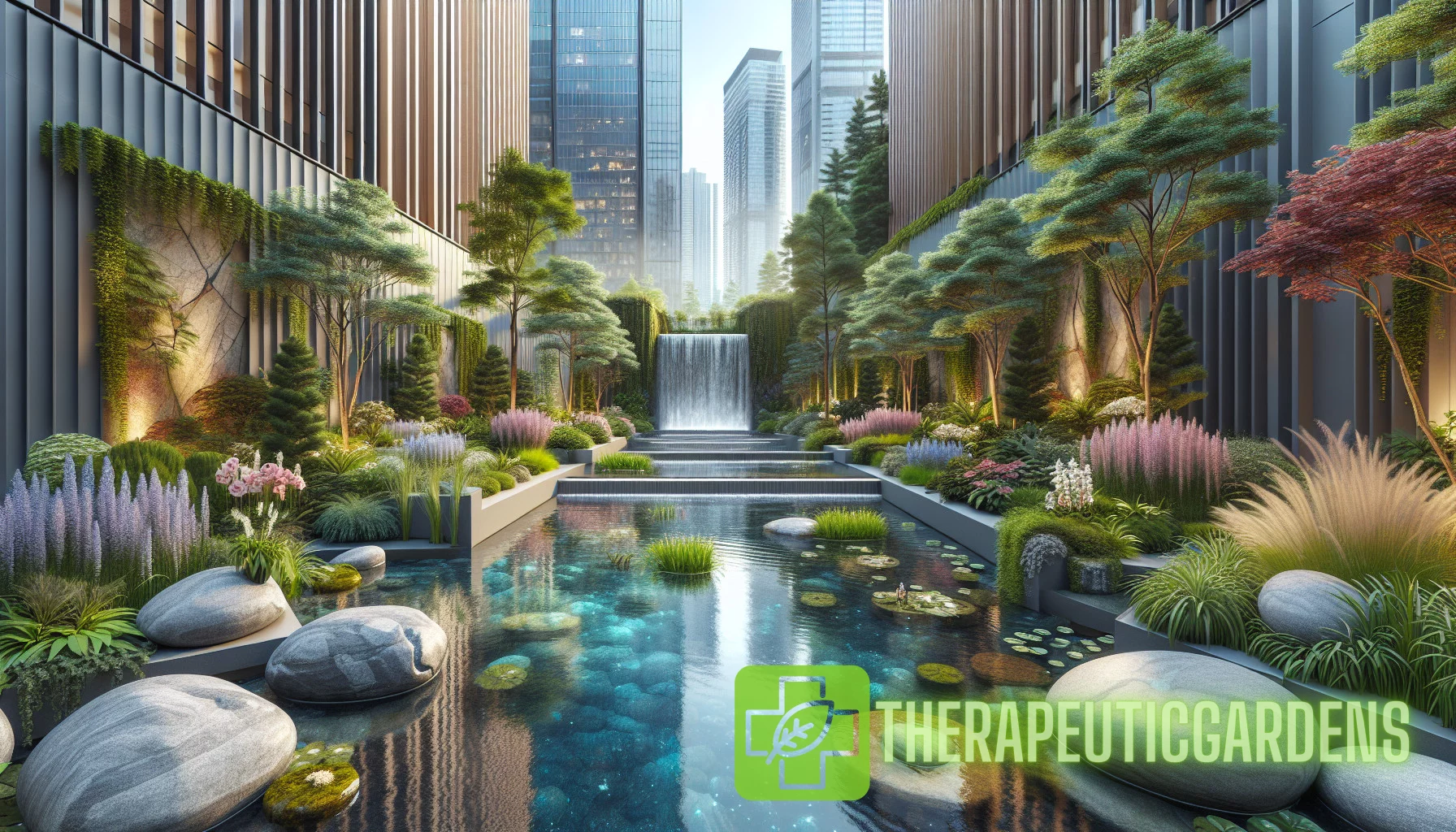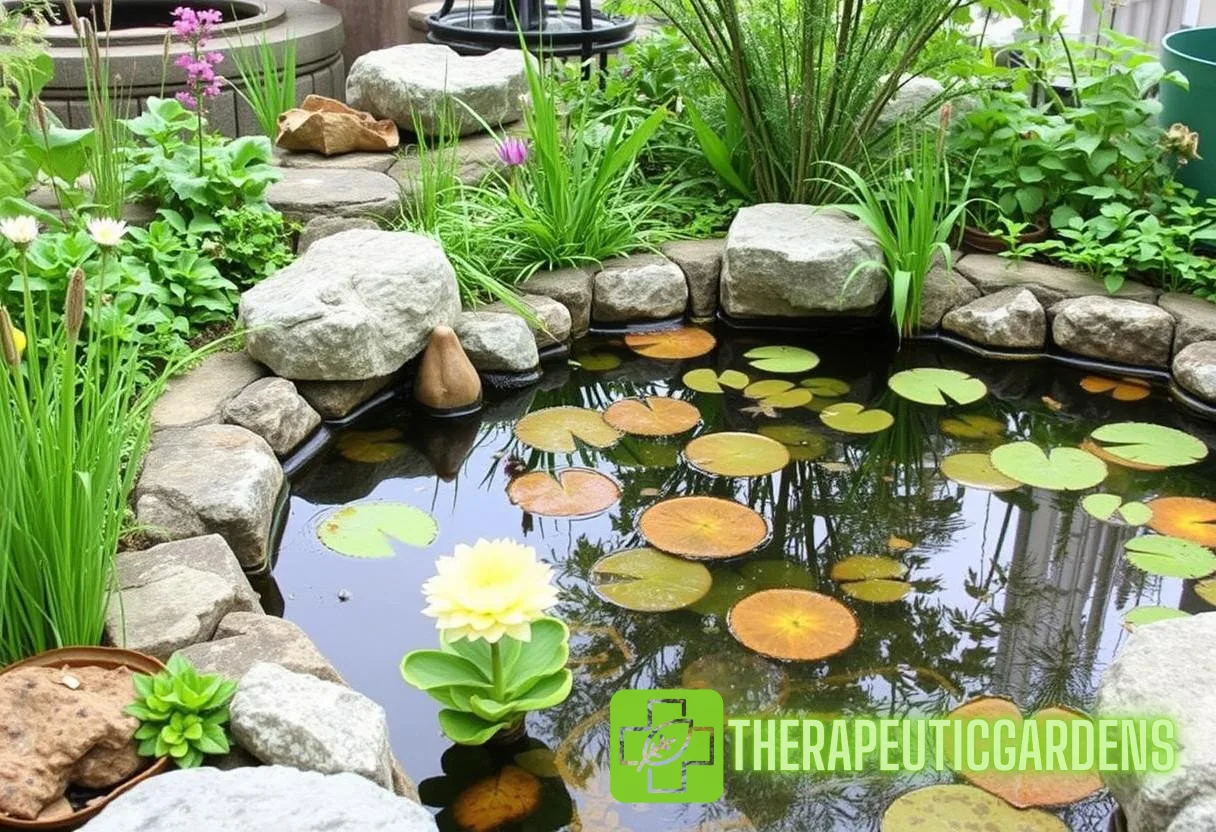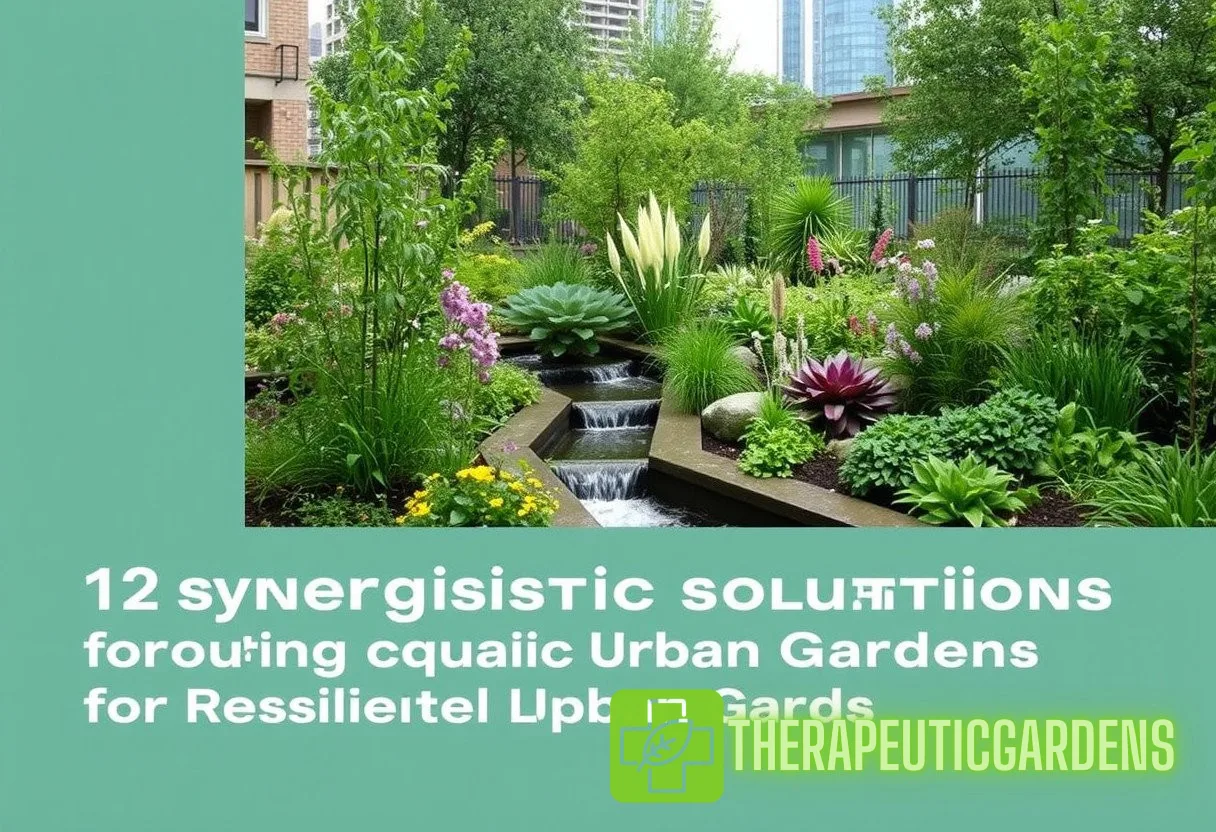Introduction
The healing power of nature has been proven time and time again, and therapeutic gardens have emerged as a way to harness this power and promote well-being. One aspect of therapeutic gardens that is gaining increasing attention is the incorporation of water features. Water has a calming and soothing effect on the human mind and body, and when combined with the natural beauty of a garden, it can create a truly healing waterscape.
In this guide, we will explore the concept of enhancing the healing waterscape in urban therapeutic gardens. We will unveil novel evergreen concepts and design principles that can be applied to create tranquil and therapeutic environments. Whether you are a garden designer, landscape architect, or simply a nature enthusiast, this guide will provide you with valuable insights and inspiration for incorporating water features into your garden design.
The Benefits of Therapeutic Gardens
Before delving into the specifics of water feature design, it’s important to understand the overall benefits of therapeutic gardens. Therapeutic gardens have been shown to have a wide range of positive effects on physical, mental, and emotional well-being. Some of the key benefits include:
- Stress reduction
- Improved mood and mental health
- Increased physical activity
- Reduced blood pressure and heart rate
- Enhanced social interaction
- Improved cognitive function
- Boosted immune system
These benefits are not only beneficial for individuals, but they also have the potential to improve the overall health and well-being of communities. By creating spaces that facilitate relaxation, rejuvenation, and connection with nature, therapeutic gardens can contribute to a healthier and happier society.
Design Principles for Therapeutic Gardens
Before we dive into the specifics of incorporating water features, it’s important to establish a solid foundation of design principles for therapeutic gardens. These principles can guide the creation of a space that is not only aesthetically pleasing but also conducive to healing and well-being. Some key design principles to consider include:
1. Nature Integration
One of the fundamental principles of therapeutic garden design is the integration of nature. The goal is to create a space that feels like a natural oasis, even in the heart of an urban environment. Incorporating elements such as plants, trees, and natural textures can help to create a sense of tranquility and connection with the natural world.
2. Accessibility and Inclusivity
Therapeutic gardens should be accessible to people of all abilities, including those with physical limitations. Incorporating accessible pathways, seating areas, and raised planters can ensure that everyone can enjoy and benefit from the garden. It’s also important to consider the needs of individuals with sensory impairments and provide elements such as fragrant plants and tactile surfaces.
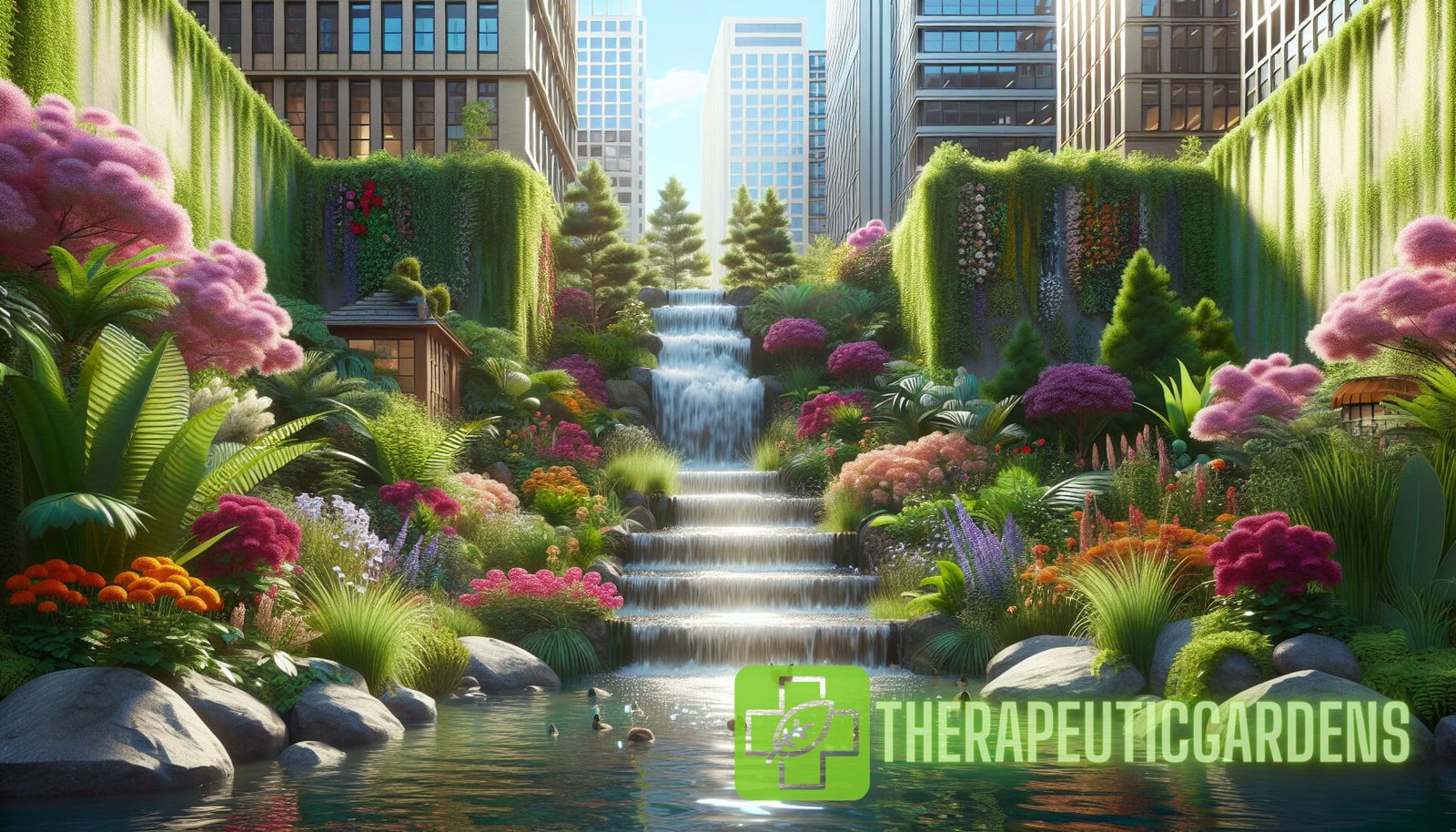
3. Sensory Stimulation
Engaging the senses is a key aspect of therapeutic garden design. By incorporating a variety of sensory elements, such as the sound of running water, the scent of flowers, and the texture of plant leaves, the garden can provide a multi-sensory experience that is both calming and stimulating.
4. Privacy and Retreat
Therapeutic gardens should provide a sense of privacy and retreat. By strategically placing trees, shrubs, and other vegetation, designers can create intimate spaces within the garden that offer a respite from the outside world. Privacy screens, pergolas, and trellises can also be used to create secluded areas for reflection and relaxation.
Now that we have established the foundation of design principles for therapeutic gardens, let’s explore how water features can be incorporated to enhance the healing waterscape.
Incorporating Water Features into Therapeutic Gardens
Water is inherently therapeutic, and incorporating water features into therapeutic gardens can amplify the healing benefits. Here are some ideas for incorporating water features into your garden design:
1. Reflecting Pools and Water Mirrors
Reflecting pools and water mirrors are simple and elegant ways to incorporate water into a garden. These features not only provide a tranquil visual element but also create a sense of depth and spaciousness. By strategically placing reflective surfaces, such as polished stone or glass, the garden can be transformed into a serene oasis.
2. Waterfalls and Cascades
The sound of running water has a calming effect on the mind and body, making waterfalls and cascades an excellent addition to therapeutic gardens. The sound of water can help mask unwanted noise, creating a peaceful and harmonious environment. Waterfalls and cascades also provide visual interest and can be designed to blend seamlessly with the surrounding landscape.
3. Stream Beds and Dry Creek Beds
Stream beds and dry creek beds can add a natural and dynamic element to therapeutic gardens. By creating a meandering path for water to flow, garden designers can mimic the appearance and sound of a babbling brook. Stream beds and dry creek beds can be lined with rocks, pebbles, or plants, creating a visually stunning feature that also helps with drainage.
4. Ponds and Water Gardens
Ponds and water gardens are perhaps the most traditional water features, but they are still highly effective in therapeutic garden design. The presence of water can attract wildlife, such as birds and butterflies, creating a sense of harmony and connection with nature. Ponds can also be home to aquatic plants and fish, adding further interest and diversity to the garden ecosystem.
5. Rain Gardens
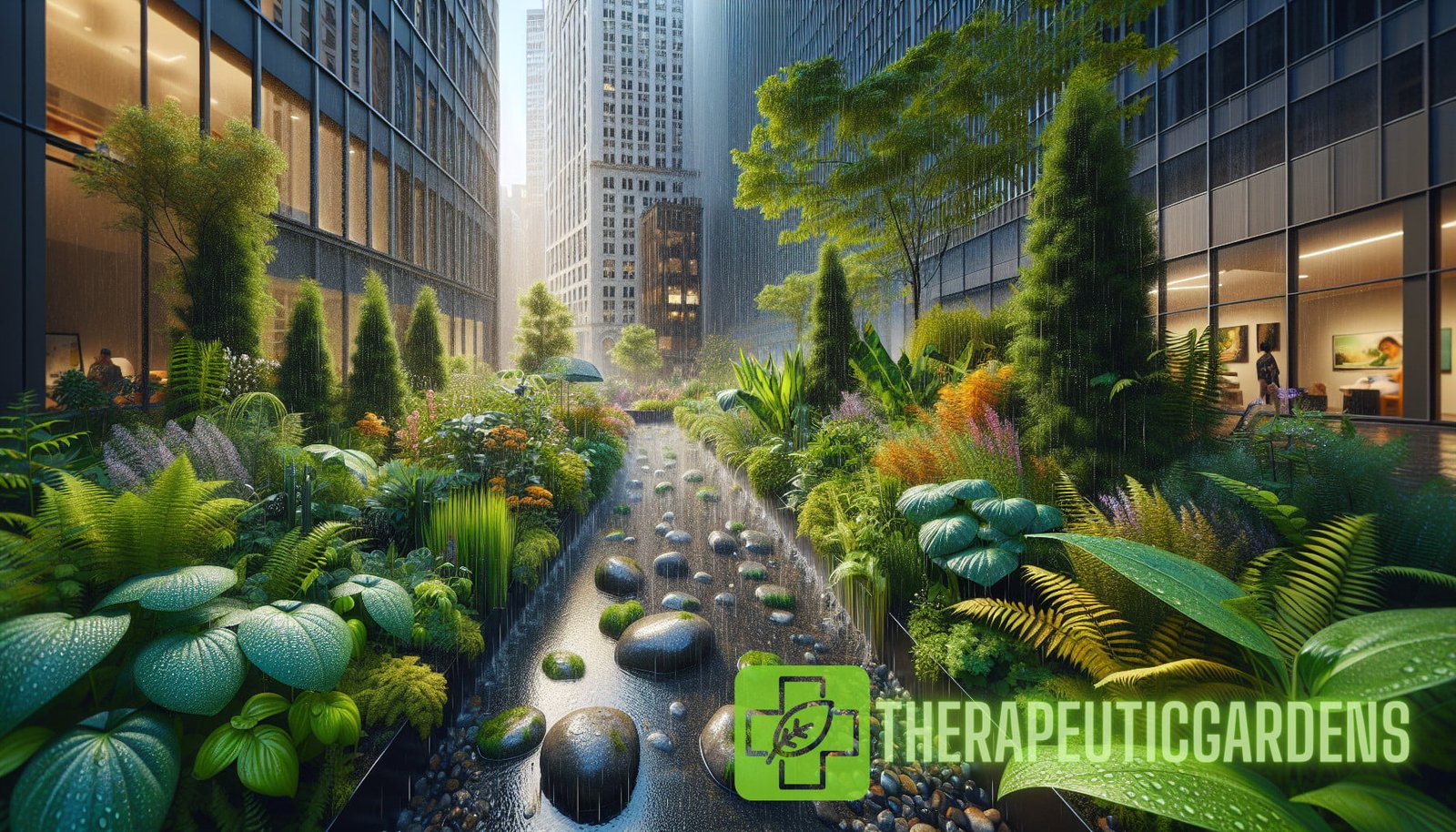
Rain gardens are a unique type of water feature that can be both visually stunning and ecologically beneficial. These gardens are designed to capture rainwater runoff from roofs, driveways, and other impermeable surfaces. By incorporating native plants that are adapted to wet conditions, rain gardens can help filter and cleanse the water before it returns to the ground.
The Healing Power of Water in Therapeutic Gardens
Now that we have explored various ways to incorporate water features into therapeutic gardens, let’s delve into the healing power of water and why it is such a valuable component of these spaces.
1. Stress Reduction
Water has a calming effect on the mind and body. The sound of flowing water can help to drown out background noise and induce a state of relaxation. Research has shown that exposure to water, whether in the form of a water feature or a natural body of water, can significantly reduce stress levels and promote a sense of calm.
An example related link: Hydrotherapy on Wikipedia
2. Improved Mental Health
In addition to reducing stress, water features in therapeutic gardens can also contribute to improved mental health. The soothing nature of water can help to alleviate symptoms of anxiety and depression. Spending time in a garden with water features can provide a sense of peace and tranquility, easing the mind and improving overall well-being.
3. Physical Healing
Water features in therapeutic gardens can also support physical healing. The sound and sight of water can distract from physical pain and discomfort, providing a natural form of pain relief. Water features can also create a cooling effect in hot weather, promoting comfort and relaxation.
4. Connection to Nature
Water is an essential element of the natural world, and incorporating it into therapeutic gardens can foster a deeper connection with nature. The presence of water can attract wildlife, such as birds and butterflies, creating a harmonious ecosystem. Water features can also serve as focal points for meditation and reflection, allowing individuals to connect with the natural world on a deeper level.
5. Symbolism and Metaphor
Water has long been associated with healing, purification, and renewal. In many cultures, water is seen as a symbol of life and a source of spiritual nourishment. Incorporating water features into therapeutic gardens can tap into these symbolic meanings, providing individuals with a sense of renewal, transformation, and hope.
Conclusion
Enhancing the healing waterscape in urban therapeutic gardens is a powerful way to harness the innate healing power of water. By incorporating water features that are both beautiful and functional, garden designers can create tranquil and therapeutic spaces that promote well-being and improve quality of life. Whether it’s a reflecting pool, a waterfall, or a rain garden, the possibilities for incorporating water features into therapeutic garden design are endless. So, go ahead and unleash your creativity to create a truly healing waterscape that will nourish the mind, body, and soul.
—— Internal links: – Discover the Power of Therapeutic Gardens: A Guide to Inspiring Design Principles (https://therapeuticgardens.store/garden-design/discover-the-power-of-therapeutic-gardens-a-guide-to-inspiring-design-principles/) – Garden Waterscaping: Enhancing the Healing Waterscape (https://therapeuticgardens.store/garden-design/garden-waterscaping/)
